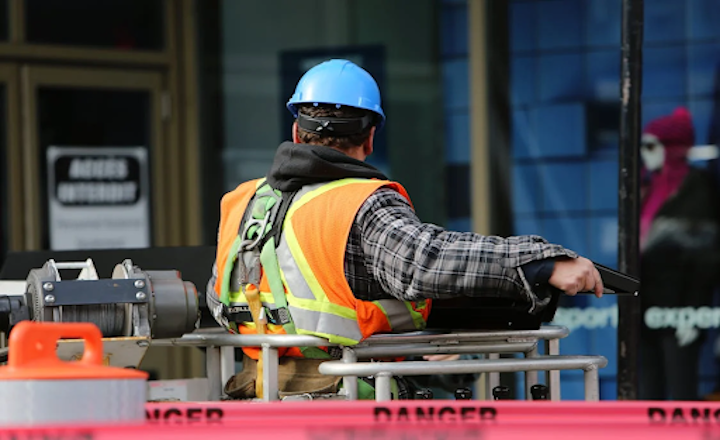
Safety is one of the most important aspects of running a construction business. Construction sites are filled with potential hazards, from heavy machinery to unstable structures, making it vital for business owners to prioritise safety at every turn.
Failing to address these risks can lead to severe injuries, project delays, and costly legal issues. With the proper precautions in place, businesses can minimise risks and foster a culture of safety that benefits everyone involved.
The following five tips offer practical steps for business owners looking to enhance safety standards and ensure construction sites remain compliant and accident-free.
Prioritise the Right Safety Equipment and Tools
The first step towards improving safety on construction sites is ensuring the right safety equipment is available. Proper tools and safety gear can reduce the risk of accidents. Essential items such as hard hats, high-visibility clothing, and safety harnesses should be mandatory for all workers.
Warning signs, hazard markers, and protective barriers are also necessary to highlight potential hazards around the site. Tools such as temporary fencing or barrier tape can direct workers away from dangerous areas. All equipment must be well-maintained and regularly inspected to ensure that it remains in optimal working condition.
Construction sites often change rapidly, so adapting safety measures to the site’s evolving needs is crucial. Consider investing in wearable safety sensors or smart helmets that alert workers to potential dangers. Choosing the proper safety solutions goes beyond following regulations; it demonstrates a commitment to the welfare of every worker.
Develop a Comprehensive Site Safety Plan
A comprehensive safety plan is the backbone of any safe construction site. This plan should identify all potential hazards, detail safety procedures, and outline how emergencies will be handled. The safety plan must be specific to each site, as no two construction projects are identical.
Involving site supervisors and workers in creating the plan is essential. Workers often know firsthand where the risks are, and their input can be invaluable in developing practical safety procedures. This plan should be easily accessible to all employees in hard copies or digital versions. Displaying essential safety instructions on-site can constantly remind you of the necessary precautions.
Once developed, the safety plan should be reviewed regularly to accommodate changes in the site’s layout, equipment, or workforce. Proper documentation and clear communication of these changes ensure everyone is informed and updated.
Conduct Regular Safety Audits and Inspections
Inspections are crucial to maintaining high safety standards on construction sites. Regular safety audits help identify potential problems before they escalate into accidents. A structured process for checking equipment, tools, and the general environment is essential. It includes reviewing scaffolding, ladders, electrical systems, and machinery.
Having a dedicated safety officer or an external expert conduct these inspections ensures that potential risks are identified unbiasedly. It’s also helpful to schedule surprise inspections as part of regular site management. These unscheduled checks encourage workers and supervisors to maintain consistent safety standards.
When issues are found during an inspection, immediate action should be taken. Delaying corrections, even for minor infractions, can lead to more significant risks. Staying proactive with audits shows a solid commitment to safety and helps avoid costly penalties for failing safety inspections.
Implement Continuous Jobsite Safety Training
Safety training should not be a one-off occurrence. Construction site workers face challenges daily, and ongoing training ensures they can handle them safely. All workers, from supervisors to new hires, should receive comprehensive safety training that covers basic safety measures, hazard identification, and correct usage of safety equipment.
Practical training sessions are particularly effective. For example, hands-on demonstrations of operating machinery safely or what to do in an emergency are beneficial. It’s also beneficial to provide specialised training tailored to specific job roles. Workers operating heavy machinery, for instance, should receive more in-depth training on handling those particular tools safely.
Regular refresher courses keep safety practices fresh in workers' minds. A culture of continuous learning fosters awareness of safety practices, helping prevent accidents caused by human error. Ensuring everyone is on the same page regarding safety practices strengthens the team’s ability to work effectively while minimising risk.
Establish a Clear Emergency Response Plan
Accidents may still happen despite every precaution, so having a well-prepared emergency response plan is crucial. This plan should detail the steps for an accident, fire, or other emergency. It should include evacuation routes, assembly points, and instructions for providing first aid to injured workers.
Communication plays a significant role in any emergency. Ensuring that every worker knows who to contact and what procedures to follow can make a significant difference in the outcome of an emergency. First aid kits, fire extinguishers, and emergency contact numbers should be easily accessible throughout the site.
Regular emergency drills allow workers to practice the procedures in a controlled environment, ensuring they remain calm and efficient during emergencies. Reviewing and updating the emergency response plan ensures it stays relevant and practical as site conditions change significantly.
Conclusion
Enhancing safety on construction sites is more than just meeting regulations—it’s about protecting your most valuable asset: your workforce. Business owners can create safer, more efficient worksites by implementing practical measures, from investing in the proper safety equipment to ensuring continuous training and emergency preparedness. These five tips offer a strong foundation for building a safety culture that reduces accidents and improves overall productivity and worker morale.
| < Prev | Next > |
|---|








